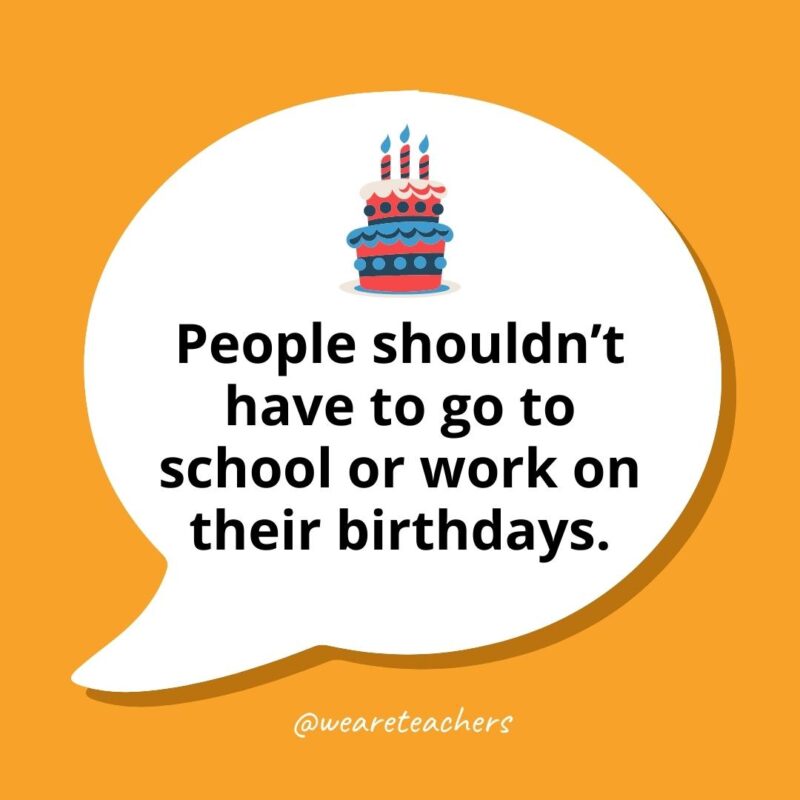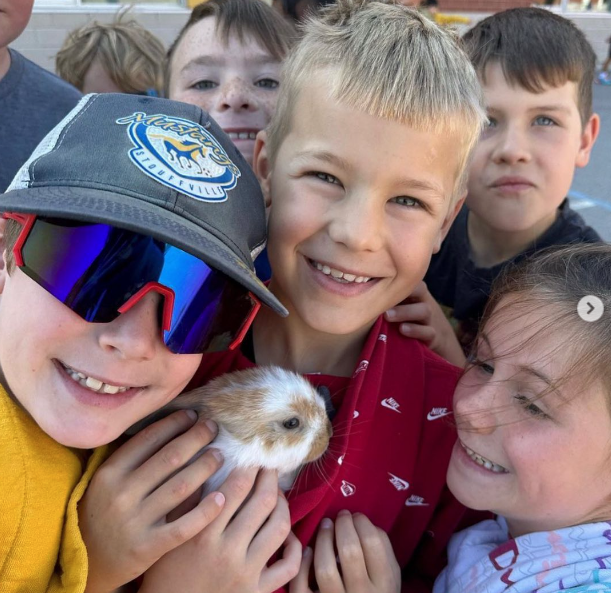Developing leadership skills isn’t just about creating leaders. It’s about building confidence, promoting collaboration, and learning to take initiative. Whether you’re an administrator who wants want to develop leadership skills in your staff or a teacher who wants to nurture these important skills in your students, there are plenty of age-appropriate leadership activities to take part in. The activities below are learning in disguise because they provide fun opportunities for both adults and kids to step into roles where they support others and make meaningful decisions while developing essential leadership skills.
Jump to:
Leadership Activities for Educators
Strong, confident educators lead by example, inspiring students to follow suit. These activities are designed to help teachers develop qualities like adaptability, communication, decision-making, and collaboration, all of which are essential to guiding students toward their leadership growth.
1. Peer observation and feedback loops
Set up a peer observation system where teachers observe each other’s classes, focusing on leadership qualities like classroom management and communication. Afterward, teachers give and receive feedback, helping to identify areas for growth and improvement.
2. Educator leadership roundtables
Organize monthly roundtable discussions with fellow teachers to discuss leadership challenges in the classroom. Educators can share insights, offer support, and brainstorm solutions for leading students more effectively.
3. Action research projects
Undertake an action research project where you identify a challenge in your classroom or school, research best practices, and implement new leadership techniques to address the issue. Reflect on the results and share your findings with colleagues.
4. Leadership book study groups

Form a leadership book study group with fellow educators to explore texts about leadership in education. This will provide new insights into leading effectively in the classroom and inspire innovative ways to guide students.
5. Professional development workshops on leadership
Attend or organize professional development workshops focused on leadership within education. Workshops can cover topics like decision-making, leading change, conflict resolution, or mentoring students toward leadership.
6. Mentor a new teacher
Take on the role of mentor for a new teacher at your school. Not only will this help you develop your leadership and communication skills, but it will also strengthen your ability to guide others—both students and colleagues.
7. Take initiative in school-wide projects
Volunteer to lead a school-wide project, like organizing a fundraiser or planning a special event. This allows you to practice leadership skills such as organization, collaboration, and communication, all while making a positive impact on the school community.
8. Participate in leadership conferences

Attend leadership conferences specifically for educators. These conferences often offer workshops, keynote speakers, and networking opportunities focused on leadership growth in education.
9. Leadership self-assessment
Take a leadership self-assessment to identify your strengths and areas for growth as a leader. Based on your results, set specific goals to improve your leadership abilities over the school year.
10. Classroom leadership vision statement
Create a leadership vision statement that outlines your goals as an educator-leader. This can include how you plan to foster leadership among your students and how you will continue to grow in your leadership role.
11. Teacher collaboration groups
Create small, collaborative working groups with fellow educators to plan lessons, solve classroom challenges, or work on shared projects. Take turns leading these sessions, and practicing leadership skills while collaborating on meaningful work.
12. Develop an educator coaching program
If your school doesn’t already have a coaching program, propose one where experienced teachers coach newer or struggling teachers. As a coach, you’ll practice leadership by offering guidance, sharing strategies, and providing support.
13. Lead professional learning communities (PLCs)
Volunteer to lead a professional learning community at your school. This is an opportunity to guide your peers through focused discussions on improving teaching practices and student outcomes.
14. Educator networking for leadership growth
Expand your leadership skills by networking with educators outside of your immediate school. This can include joining local or online educator groups, participating in forums, or attending cross-district meetings to share ideas and challenges related to leadership.
Leadership Activities for Students
Incorporating leadership games and activities into the classroom is important for developing essential skills in young learners. These exercises are designed to help students practice key leadership skills in a fun and engaging way, encouraging them to take initiative and grow as effective communicators and collaborators. Each activity creates an environment where students can experience leadership in action, setting the foundation for future success both in and outside the classroom.
15. “Leader of the Week” rotation
Every week, assign a student to be the Leader of the Week. This student will be responsible for managing simple classroom tasks like organizing materials, giving directions, and leading group discussions. Rotate the role regularly so that all students get leadership practice.
16. Collaborative decision-making challenges
Present your class with a problem that needs solving (e.g., how to get to a local field trip locale via public transportation). Divide them into groups and encourage students to work together to come up with the best solutions. Each group presents its ideas and the class votes on the winning solution.
17. Role-model research project
Have students research a famous leader from history or their local community. Then, have them present to the class, sharing key leadership qualities they admire in that individual and how they can apply those traits to their own lives.
18. Student-led conferences
Allow students to lead their parent-teacher conferences by presenting their work, reflecting on their strengths, and discussing areas where they’d like to improve. This activity helps build self-awareness and initiative.
19. Classroom committee creation
Create classroom committees responsible for different areas of classroom management (such as a “supply committee” or a “recess committee”). Each committee should be led by a student who reports back to the teacher, encouraging collaboration and decision-making.
20. “What if” leadership scenarios
Pose real-world leadership scenarios to your class (e.g., “What if a classmate isn’t contributing to a group project?”). Let students brainstorm how they would handle these situations as leaders, and then discuss how their responses reflect leadership values like empathy and communication.
21. Weekly leadership quote reflection
Introduce a weekly quote about leadership or responsibility, and have students reflect on it. Engage them in a class discussion about how the quote relates to their leadership journeys and how they can apply it to daily life.
22. Peer teaching partnerships
Pair up students and assign them the task of teaching each other something they are good at. This activity encourages them to take initiative, practice communication, and develop patience.
23. Student-led morning meetings
Allow students to take turns leading morning meetings. They can decide the topic of discussion, manage the schedule, and ensure the meeting stays on track, building organization and leadership skills in the process.
24. Service learning project

Organize a class service learning project where students lead the planning and execution. Whether it’s a school fundraiser or a community cleanup event, the students take ownership of each step, learning leadership through service.
25. Group storytelling leadership
Let students collaboratively tell a story, with one student starting and the next continuing the narrative. The twist? Each student must direct the story in a leadership-focused direction, guiding how characters display leadership traits in challenging situations.
26. Class jobs with leadership titles

Assign leadership-related titles to regular classroom jobs (e.g., “Resource Manager” instead of “Paper Passer,” “Chair of the Chairs” instead of “Chair Stacker,” or “Sanitization Manager” for the student responsible for keeping hand soap stocked). This helps students take ownership of their responsibilities and builds confidence in their ability to lead.
27. Leadership role-play games
Create leadership role-playing scenarios in which students must act as a leader in specific situations (e.g., resolving a conflict between team members in a sport). This encourages quick thinking, empathy, and decision-making.
28. Leadership badges
Create a leadership badge system where students earn badges or stickers for demonstrating leadership qualities like initiative, collaboration, and communication. They can proudly wear these badges or display the stickers on a notebook, motivating them to regularly exhibit leadership skills.
29. Team-building leadership workshops
Once a month, host a “Team Leadership Workshop” where students participate in various team-building activities. Focus on specific leadership qualities, such as communication, trust, or problem-solving, and reflect on how each skill contributes to effective leadership.
30. Peer mentorship program
Pair older students with younger students in a mentorship program. The older students guide the younger ones through a specific project, helping to build their leadership and coaching skills.
31. Leadership journaling
Give each student a leadership journal and carve out time for them to reflect on their leadership experiences at the end of the week. Prompt them with questions like, “When did I take initiative?” or “How did I lead by example this week?”
32. Class problem-solving committee
Create a “problem-solving committee” in the class. When issues arise (such as arguments during recess), the committee discusses the problem and presents solutions to the class. Through this activity, students will gain experience in conflict resolution and decision-making.
33. Student-led clubs
Encourage students to start their own clubs that meet before or after school. They’ll take responsibility for finding a supervising teacher, organizing meetings, planning activities, and leading their peers—developing their organizational and leadership skills throughout the process.
34. Leadership-in-action projects
Assign students leadership roles in long-term class projects where they oversee specific tasks (e.g., project manager for a science fair or editor-in-chief for a classroom newsletter). They are responsible for coordinating the efforts of their peers, setting deadlines, and ensuring the project’s success, helping to build leadership and time-management skills.
35. Leadership presentation day
Each student presents a leadership topic of their choice, teaching the class about a particular leadership trait and why it’s important. This helps develop confidence and leadership communication skills.
36. “Be the Coach” group activities
In a physical education class, have students take turns being the “coach” of their group. The student leader is responsible for giving directions, ensuring participation, and helping teammates stay motivated.
37. Leadership at every stage
In group projects, assign a different student to lead during each stage—planning, execution, and presenting. This way, every student gets the chance to experience leadership in various parts of the project.
38. Student news channel
Allow students to create their own classroom “news channel” where they produce and report weekly on important classroom updates. Each week, a different student acts as the “news director,” taking on a leadership role by deciding what to report and how to present it. The role rotates weekly so that every student gets the opportunity to lead.
39. Real-world problem-solving projects
Present students with real-world problems, like environmental issues or school-wide challenges. Divide them into groups to create action plans, which they present to the class, focusing on leadership, initiative, and collaboration.
40. Class debate leadership teams

Organize class debates where students take on leadership roles by guiding their teams in building strong arguments and presenting ideas. The team leaders are responsible for coordinating research, assigning roles, and ensuring the debate runs smoothly. This activity helps students develop leadership, public speaking, and critical thinking skills, while also fostering teamwork.
41. Team captain challenges
The role of “team captain” isn’t just for PE class! Rotate this leadership role in any classroom group activity, and have one student take charge by leading the group, delegating tasks, and ensuring everyone has a chance to contribute. Team captains are responsible for keeping the group on track, solving conflicts, and motivating their peers.
42. Peer review leadership feedback
After completing group work, have students provide constructive feedback to their peers on how they demonstrated leadership. Encourage them to offer specific, positive comments as well as gentle suggestions for improvement. This process helps students become more aware of their leadership styles and areas for growth and also teaches them the importance of giving and receiving constructive criticism.
43. Student council role exploration
Even if there’s no formal student council, you can create a mock version within the classroom. Students “campaign” for leadership roles, such as president, vice president, treasurer, or secretary, and then work together to make decisions on classroom projects or improvements. This exercise allows students to experience the democratic process, develop their public speaking and negotiation skills, and understand the responsibilities of leadership roles.
44. Class project manager
Assign one student as the “project manager” during group projects. The manager is responsible for delegating tasks, setting deadlines, and overseeing group communication to ensure the project progresses smoothly. Additionally, the project manager will facilitate meetings, resolve any conflicts, and provide guidance to team members. This role helps students develop essential leadership and organizational skills while learning how to effectively manage a team and drive a project to completion.
45. Leadership reflection circles
At the end of each week, hold a reflection circle where students share moments when they took on leadership roles or admired leadership in others. This encourages peer recognition and personal reflection.
46. Charity leadership challenge
Challenge students to lead a fundraising campaign or organize a charity event. This activity helps students develop leadership skills while engaging in meaningful, community-oriented projects. Additionally, it teaches them valuable lessons in project management, teamwork, and the impact of their efforts on the community, fostering a sense of responsibility and empathy.
47. Leadership book club
Start a classroom book club focused on leadership themes, such as teamwork and decision-making. Rotate the role of “discussion leader” among students, where each leader guides conversations, asks questions, and highlights key lessons from the readings. This activity promotes critical thinking and communication and allows students to practice leadership by facilitating group discussions and encouraging deeper reflection.
48. Class pet-care leaders

Assign students to take turns as class pet-care leaders, where each student is responsible for the care of a class or school pet for the week. The leader’s duties include feeding the pet, ensuring it has a clean living space, and attending to any special needs. In addition to these tasks, the leader is responsible for creating a care schedule, tracking the pet’s well-being, and communicating with the class about any important updates or issues. This role teaches students responsibility, initiative, and time management while fostering empathy and a sense of accountability.
49. Leadership through art

Allow students to express leadership qualities through creative projects, such as designing posters that highlight traits like integrity and empathy, or collaborating on an art piece that symbolizes teamwork. Have students reflect on these qualities and present their work to the class, explaining their artistic choices and the leadership principles they represent.
Learn more: Collaborative Art Projects That Bring Out Kids’ Creative Side
50. Class reflection
After a significant school event or classroom project, facilitate a class reflection where students lead a discussion about their experiences. Encourage them to share their thoughts on what went well, what challenges they faced, and the lessons they learned. This process helps students develop leadership skills by engaging with their peers through reflective conversations and promoting a deeper understanding of their collective experiences.
51. Leadership field trips
Organize field trips where students can observe leadership in action, such as visiting a local business or meeting a community leader. During the trip, have students note specific leadership traits they observe and engage in discussions about how these qualities contribute to effective leadership. Afterward, facilitate a reflection session where students share their insights and consider how they can apply these leadership traits in their own lives.
52. Leadership TED Talks
Have students prepare and deliver “TED Talk”-style presentations on leadership topics they are passionate about. They should focus on engaging storytelling, impactful delivery, and clear messaging. After the presentations, encourage peer evaluations and discussions on the effectiveness of their delivery and content.
53. Class “Idea Box” leader
Set up a class “idea box” where students can submit suggestions for activities or improvements. Appoint a student as the “Idea Box Leader,” a role that rotates weekly, to review the submitted ideas, organize them, and present the top suggestions to the class for discussion and decision-making. This rotating leadership role helps students develop skills in organization, evaluation, and public speaking while fostering a sense of ownership and participation in class improvements.
54. Outdoor leadership adventures
Plan outdoor activities such as scavenger hunts or obstacle courses where students take turns leading their group through various challenges. Each student leader is responsible for guiding their team, making strategic decisions, and ensuring effective collaboration. These adventures not only build teamwork and decision-making skills but also provide students with opportunities to practice leadership in dynamic, real-world settings, enhancing their ability to inspire and direct their peers.
55. Classroom business simulation
Create a classroom business simulation where students take on various leadership roles such as CEO, Marketing Director, and Team Leader. For example, they could run a hot-lunch service once a week where students manage the menu, handle logistics, and oversee customer service. Alternatively, they could operate a used-book store where teams are responsible for inventory management, marketing, and customer interactions. This hands-on activity provides real-world experience in leadership and management, helping students develop skills in teamwork, decision-making, and problem-solving while understanding the complexities of running different types of businesses.

